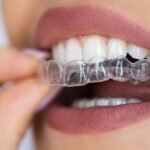Dental FAQ – Top 20 Frequently Asked Questions
1. How often should I see the dentist?
Every six months for cleanings and exams, or more often if advised due to gum disease or other conditions.
2. What are the signs I need to see a dentist immediately?
- Persistent toothache
- Swelling or abscess
- Bleeding gums
- Loose teeth
- Broken or knocked-out tooth
3. Is it normal for my gums to bleed when brushing or flossing?
No. Bleeding gums can be a sign of gingivitis or gum disease. See your dentist for evaluation.
4. What’s the best way to brush my teeth?
Use a soft-bristled toothbrush, angle it 45° to your gum line, and brush for two minutes, twice a day.
5. Do I really need to floss every day?
Yes. Flossing removes plaque between teeth that brushing misses. It helps prevent cavities and gum disease.
6. Are electric toothbrushes better than manual ones?
Electric brushes are often more effective at removing plaque and reducing gingivitis, especially for people with limited dexterity.
7. What causes bad breath?
Common causes include poor oral hygiene, dry mouth, gum disease, and certain foods. Persistent bad breath may need professional evaluation.
8. Is teeth whitening safe?
Yes, especially when done professionally. Overuse of at-home products can cause sensitivity or enamel damage.
9. What’s the difference between a filling, crown, and root canal?
- Filling: Repairs small cavities
- Crown: Covers and strengthens a damaged tooth
- Root canal: Removes infected pulp from inside the tooth
10. When should my child first see a dentist?
By their first birthday or when the first tooth erupts—whichever comes first.
11. What is fluoride and why is it important?
Fluoride strengthens enamel and helps prevent decay. It’s found in most toothpastes and some municipal water supplies.
12. Are dental X-rays safe?
Yes. Digital X-rays use very low radiation levels and are considered safe for children and adults.
13. What is gum disease and can it be reversed?
Gum disease is an infection of the gums. In early stages (gingivitis), it can be reversed with professional cleanings and good oral hygiene.
14. Do wisdom teeth always need to be removed?
Not always. Removal is recommended if they’re impacted, misaligned, or causing crowding or infection.
15. What are veneers?
Veneers are thin shells bonded to the front of teeth to improve appearance. They’re popular in cosmetic dentistry.
16. What’s the difference between braces and Invisalign?
Braces use brackets and wires; Invisalign uses clear aligners. Both straighten teeth, but Invisalign is more discreet.
17. Can adults get braces or Invisalign?
Absolutely. Many adults choose orthodontic treatment for cosmetic and functional improvements.
18. What should I do if I have a dental emergency?
Call your dentist immediately. For severe pain, swelling, or trauma, seek urgent care or visit the emergency room if necessary.
19. Does dental insurance cover cosmetic treatments?
Usually not. Cosmetic treatments like whitening or veneers are typically not covered, but restorative treatments may be if medically necessary.
20. How can I keep my teeth healthy between visits?
- Brush and floss daily
- Eat a balanced diet
- Avoid tobacco and excessive sugar
- Stay hydrated
- Schedule regular check-ups


